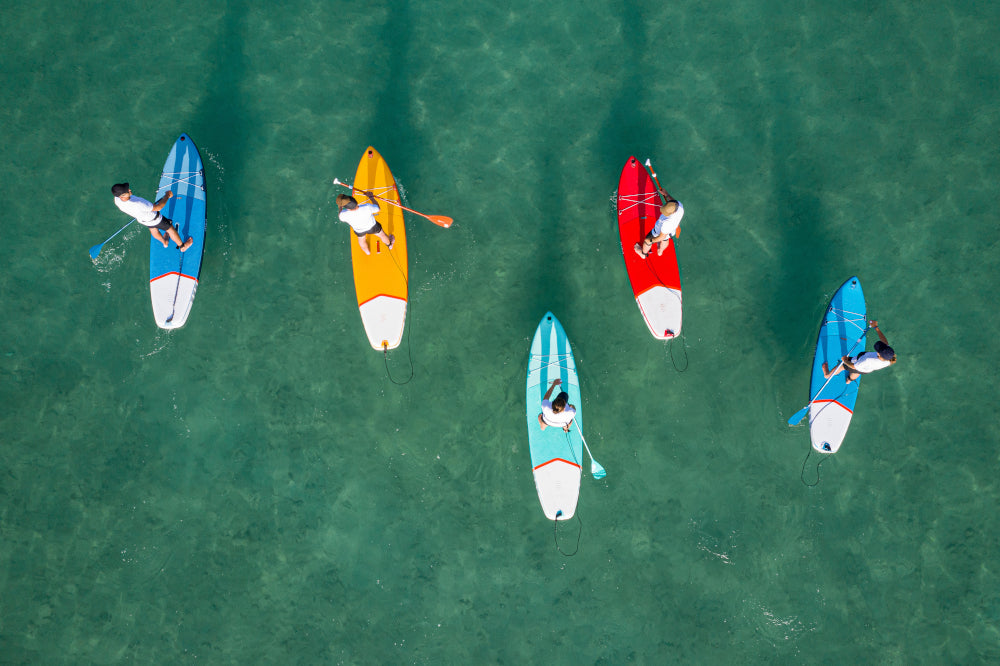
How to Choose Your Stand-Up Paddle Board
Share
Types of SUP

If you go out touring for one to two hours a day, your main need will be stability. You will need a wide and thick stand up paddle board. Important: For safe stand up paddling, don’t forget your leash.

If you go out touring for more than two hours a day and you travel long distances, you will need good glide performance. You will need a long, streamlined and lightweight stand up paddle board. Important: For safe stand up paddling, don’t forget your leash.

If you go for long rides at a racing pace, you will need good glide performance. You will need a long, streamlined and lightweight stand up paddle board. Important: For safe stand up paddling, don’t forget your leash.

If you surf small waves under 50 cm, you need stability. You need a short, wide stand up paddle with a more pronounced rocker (curved nose). Important: For safe stand up paddling, don’t forget your leash.

If you surf waves up to 3 feet, you will need maneuverability. You need a shorter, thinner stand up paddle with a more pronounced rocker (curved nose). Important: For safe stand up paddling, don’t forget your leash.

If you surf in all wave conditions, you will need speed. You need a stiff and thin stand up paddle with a more pronounced rocker (curved nose). Important: For safe stand up paddling, don’t forget your leash.
Weight and activity level, for occasional and regular SUP
Our boards come with user weight recommendations to ensure stability and buoyancy.
- Less than 132 lbs
- 132lbs - 176 lbs
- More than 176 lbs
Depending on your level: beginner, intermediate or advanced, you can opt for a less bulky or narrower board, which is faster but less stable.
Depending the waves
The more volume you have, the more your board will float and the more stable you will be; however, your board will be less manageable and less responsive.
The less volume you have, the easier to handle and more responsive your board will be; however your board will be less stable.
Depending on size
I choose my stand up paddle board according to its compact design
There are rigid SUPs and inflatable SUPs.
The advantage of an inflatable SUP is that it fits in a backpack and thus can be transported in a car boot.
A rigid stand up paddle will be stronger, more stable but more bulky. So you will need roof bars to transport it.















